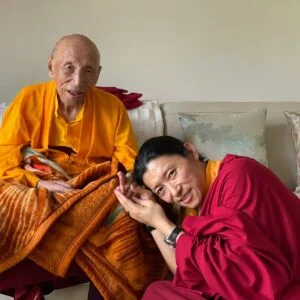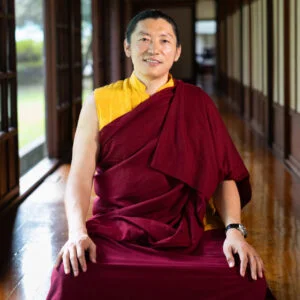Dharma means understanding the mind–our own mind– and how it functions. What do we understand by this term? Scholars and meditation masters remind us that the Sanskirt word Dharma has 10 meanings. But, when we hear the word “Dharma” we can realize that we are engaging in a new process of examination. Instead of looking outward, we are turning the focus inward to investigate ourselves. Phakchok Rinpoche here emphasizes the importance of getting to know our own minds.
Dharma: Understanding Mind and Looking Inward
Our human minds are interesting because we have self-awareness. We can see ourselves and analyze our own thoughts, emotions, and behavior. However, we’re usually not overly skilled in understanding our own minds. Most of our education and training focuses on external knowledge. We’re quite adept at looking at the external world, aren’t we?
But, Dharma means understanding mind–our perceptions and our thought processes. We can retrain ourselves to look inward. And then we will develop curiosity about how we behave. Where do we see ourselves reacting?
Why do we act in the way we do? Can we see how much time we spend performing unnecessary actions? And often, these actions–even small things–can cause suffering for ourselves and others.
So, it is truly important that we look inward and investigate how our minds work.
Dharma: Understanding Mind Not Just Reading Books!
Why don’t we see an immediate improvement as we take up Buddhist practice? Many of us make the mistake of seeing Dharma as external knowledge. We read a lot of books, and listen to many teachings, but we may miss the step of looking inward. We’re holding the Dharma at arms length–as something that isn’t part of us.
Here, Rinpoche gives us personal advice on learning to internalize. We can begin by slowing down. When we read a Dharma book, he suggests that we read a few pages and then pause. Then look inward, and investigate how we think about what we just read. And we can use the same process when we listen to Dharma teachings. If we listen to a recorded teaching, we might listen to some key phrases, and then stop the recording and contemplate. We may want to listen several times, taking in the words, but also the context and the tone of the delivery.
Every word of a Dharma teaching can help us heal. We can ask ourselves why the teacher is emphasizing a certain point. Why does he or she repeat an instruction several times or using different examples? This isn’t some type of high level meditation–but it is a skillful way of applying the Dharma.
Benefits of Understanding Mind
We benefit from getting to know ourselves! We’ll gain wisdom and we will see some improvement in our own behavior–it is gradual but it unfolds naturally. If you are interested in hearing more about how to investigate your mind, check out Training the Mind: An Introduction–Samye Institute’s introductory home-study program.
Dharma: Understanding Mind Reflection Exercise
Spend some time in the next several weeks investigating the way you approach the Dharma. When you read a book, or listen to a teaching, or watch a video, make a conscious decision to pause and reflect. These days when we are busy multi-tasking, we often don’t allow for the teachings to penetrate. Try to become more conscious of this tendency, and allow yourself to “do” less. For example, read a shorter passage or listen or watch just one teaching. Are you maintaining mindfulness during the entire time?
Doing this may mean it takes longer to get through a chapter, or a video or audio teaching, but notice the difference it makes. Can you see what effect this has on your mind? And does it change your physical and verbal behavior? Please share your experiences below so that others can learn from your conscious exploration!










Responses